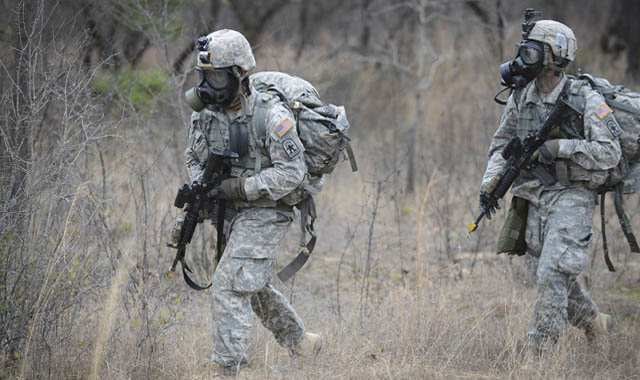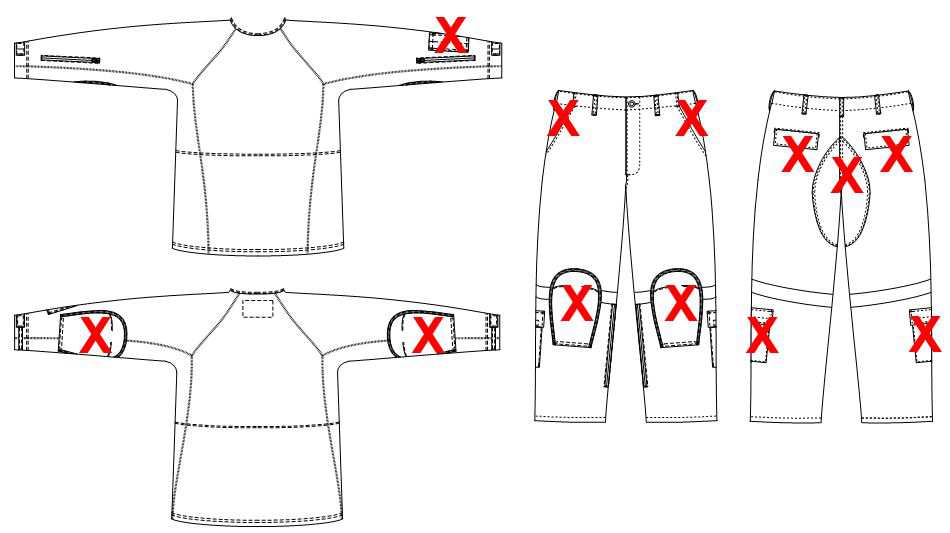Designing Protective Garments for Warfighters

The clothing worn by military personnel who interact with chemical and biological threats is key to keeping them safe. But it’s more than just the materials used in the clothing that keeps them safe. The design also plays a big role.
The design of protective clothing looks at the whole picture – everything that is worn, from the boots to the mask – and finds the best way to piece them together. It can be something as simple as where a pocket is located to the way the various pieces are connected, like gloves and the cuff of a shirtsleeve.
It’s what Stephanie Tew calls the “sweet spot between science and creativity.”
Stephanie, a Principal Research Scientist at Battelle, never expected to have “scientist” in her job title. She has a degree focused on clothing and textiles from Virginia Tech and fully expected to head to New York City to design clothes for the runway after her graduation.
But a few interesting opportunities sent her down a different path and now she helps design protective garments for Battelle’s CBRNE Defense business.
“It’s unusual and unique work. It’s half engineering and half design,” she said. “I love it. I truly think I have the best job in the world.”
The military is always looking to improve the protective capability of garments while reducing thermal burden for the warfighter. In this case, thermal burden is a measure of the heat stress imposed by protective clothing and equipment.
Although material technologies are making significant gains in improving thermal burden reduction and protective performance, gains are not always being realized at the system level. Materials alone do not drive performance. Overall garment system design includes the fit, closures, interfaces and material placement.
There are a number of challenges Stephanie has to address when working on designs for these protective garments, including:

Another example deals with the placement of pockets and patches. The air gap in between layers of materials acts as an insulator, so if you can remove some of those layers, you can help with thermal burden reduction. Removing some of the pockets from the hip region of trousers was found to make a significant difference in the thermal burden reduction.
Battelle doesn’t just help with the design of protective garments, but also tests the garments before they are sent into the field. Learn more about our Testing & Evaluation Services.
The design of protective clothing looks at the whole picture – everything that is worn, from the boots to the mask – and finds the best way to piece them together. It can be something as simple as where a pocket is located to the way the various pieces are connected, like gloves and the cuff of a shirtsleeve.
It’s what Stephanie Tew calls the “sweet spot between science and creativity.”
Stephanie, a Principal Research Scientist at Battelle, never expected to have “scientist” in her job title. She has a degree focused on clothing and textiles from Virginia Tech and fully expected to head to New York City to design clothes for the runway after her graduation.
But a few interesting opportunities sent her down a different path and now she helps design protective garments for Battelle’s CBRNE Defense business.
“It’s unusual and unique work. It’s half engineering and half design,” she said. “I love it. I truly think I have the best job in the world.”
The military is always looking to improve the protective capability of garments while reducing thermal burden for the warfighter. In this case, thermal burden is a measure of the heat stress imposed by protective clothing and equipment.
Although material technologies are making significant gains in improving thermal burden reduction and protective performance, gains are not always being realized at the system level. Materials alone do not drive performance. Overall garment system design includes the fit, closures, interfaces and material placement.
There are a number of challenges Stephanie has to address when working on designs for these protective garments, including:
- The range of missions in which they will be needed.
- The unknown type of threats that will be encountered and the duration of those threats.
- The range of environments including varying temperatures, sea water, sand, etc.
- The difficulty in making sure new designs will work with currently-fielded garments and equipment.

Another example deals with the placement of pockets and patches. The air gap in between layers of materials acts as an insulator, so if you can remove some of those layers, you can help with thermal burden reduction. Removing some of the pockets from the hip region of trousers was found to make a significant difference in the thermal burden reduction.
Battelle doesn’t just help with the design of protective garments, but also tests the garments before they are sent into the field. Learn more about our Testing & Evaluation Services.
BATTELLE UPDATES
Receive updates from Battelle for an all-access pass to the incredible work of Battelle researchers.